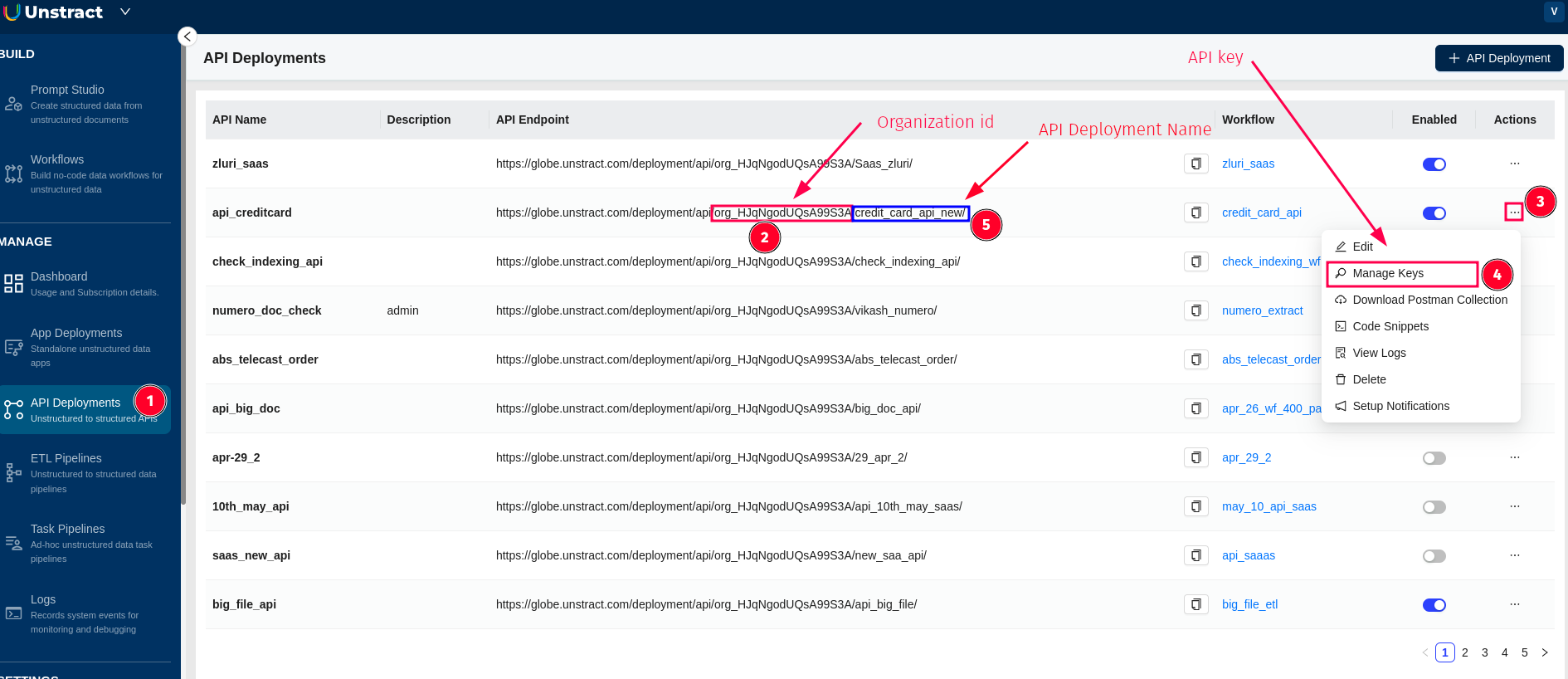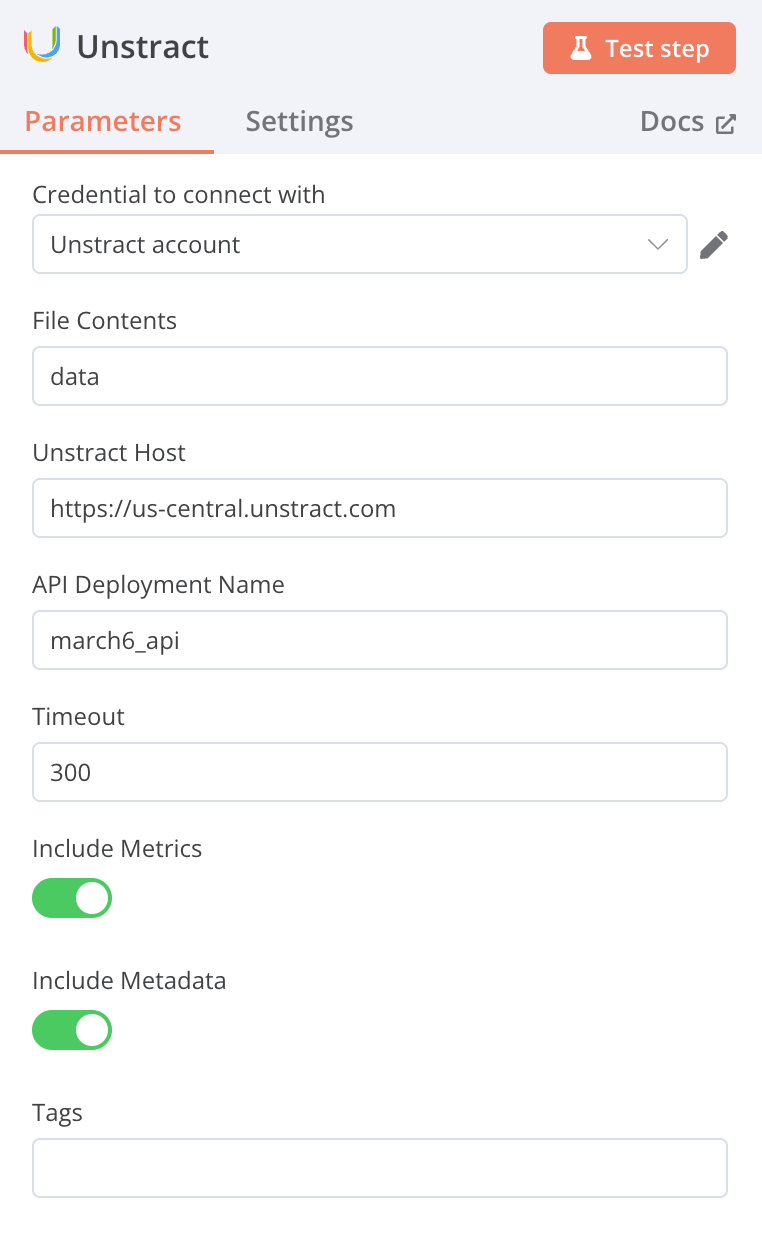N8N Custom Node
N8N is a workflow automation tool that allows you to automate tasks and workflows. This guide will show you how to use the Unstract custom node for N8N that interacts with a deployed Unstract API.
The N8N custom node is available in npm as n8n-nodes-unstract
https://www.npmjs.com/package/n8n-nodes-unstract.
Installation
Installation documentation from N8N for custom community nodes.
Once installed it would be available in Community Nodes.

After installing a community node, it will only become visible after restarting n8n.
Authentication Credentials
Credentials are required to authenticate with the Unstract API. New credentials can be created in N8N using the credentials section in overview. Enter "Unstract API" when asked to "Select an app or service to connect to". Enter the API key and the Organization ID.

🔑 How to Get Your API Key, Organization ID, and Deployment Name
Follow these steps to retrieve the required details from the Unstract API Deployments screen:
1. Navigate to API Deployments
- From the sidebar, click on API Deployments (highlighted with marker ①).
2. Get the Organization ID and API Deployment Name
-
Look at the API Endpoint column.
-
The endpoint URL contains both:
- Organization ID → It's the segment after
/org_, e.g.,org_HJqNgodUQsA99S3A(②). - API Deployment Name → It appears immediately after the organization ID, e.g.,
credit_card_api_new1(⑤).
- Organization ID → It's the segment after
3. Open the Actions Menu
- Click the three-dot menu next to your deployment (③).
4. Select Manage Keys
- From the dropdown, click Manage Keys (④) to view or generate your API Key.

Usage
Input Parameters
Note that File Contents is binary file contents loaded from any previous node.

- API Deployment name:👉 For instructions on how to get the Organization ID and API Deployment Name, refer to this section.
- File Contents: The Key name of the binary File from the previous step.
Typical Workflow
A typical workflow would look like this:
